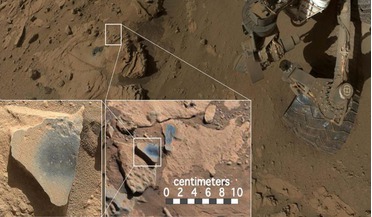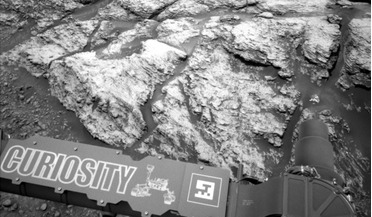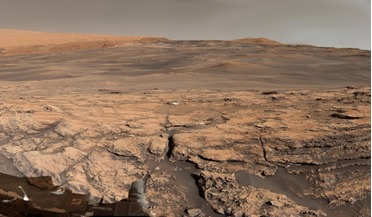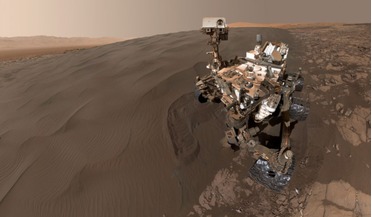 June 2018
Space 2080 a future perspective
June 2018
Space 2080 a future perspective
... spectators in immers’Vision. A few years later some six billion people ‘lived’ the descent of ‘marsonautes’ into Gale Crater. For a moment we had forgotten the ultimate goal: to find traces of proto-thermal bacteria based on triple-stranded...
 14 December 2015
NASA’s Curiosity Mars rover observes sand dunes two stories tall
14 December 2015
NASA’s Curiosity Mars rover observes sand dunes two stories tall
The rippled surface of dark sand dunes along the northwestern flank of Mount Sharp inside Gale Crater, are now being studied up close by NASA’s Curiosity Mars rover and have revealed that the dunes ...
 28 June 2016
Oxides discovered on Mars hint at an oxygen-rich past
28 June 2016
Oxides discovered on Mars hint at an oxygen-rich past
..., along with a series of other substantial geological discoveries, help bolster the theory that groundwater was present in Gale Crater – the rover’s current study area. Nonetheless, these are not the first high manganese abundances to have...
 24 June 2019
Unusually high methane spike detected by Curiosity
24 June 2019
Unusually high methane spike detected by Curiosity
..., Ann Arbor, and Curiosity rover science team. That would suggest then that something around the Gale crater area was responsible for the emission, as methane doesn’t hang around for long. Once released into...
 09 March 2020
Organic molecules found on Mars could be consistent with early life, says study
09 March 2020
Organic molecules found on Mars could be consistent with early life, says study
A recent analysis of an intriguing group of organic compounds found by the Curiosity rover in dried-up mud in the Gale Crater, could be consistent with the presence of early life on Mars, says astrobiologist Dirk Schulze‑Makuch at Washington State ...
 01 November 2021
Curiosity finds organic molecules in Mars sand dune
01 November 2021
Curiosity finds organic molecules in Mars sand dune
... add. Since its arrival on Mars in 2012, NASA’s Curiosity rover has been exploring the ancient environments in Gale Crater in search of organic compounds, primarily using its Sample Analysis at Mars (SAM) instrument. SAM is a suite of three...